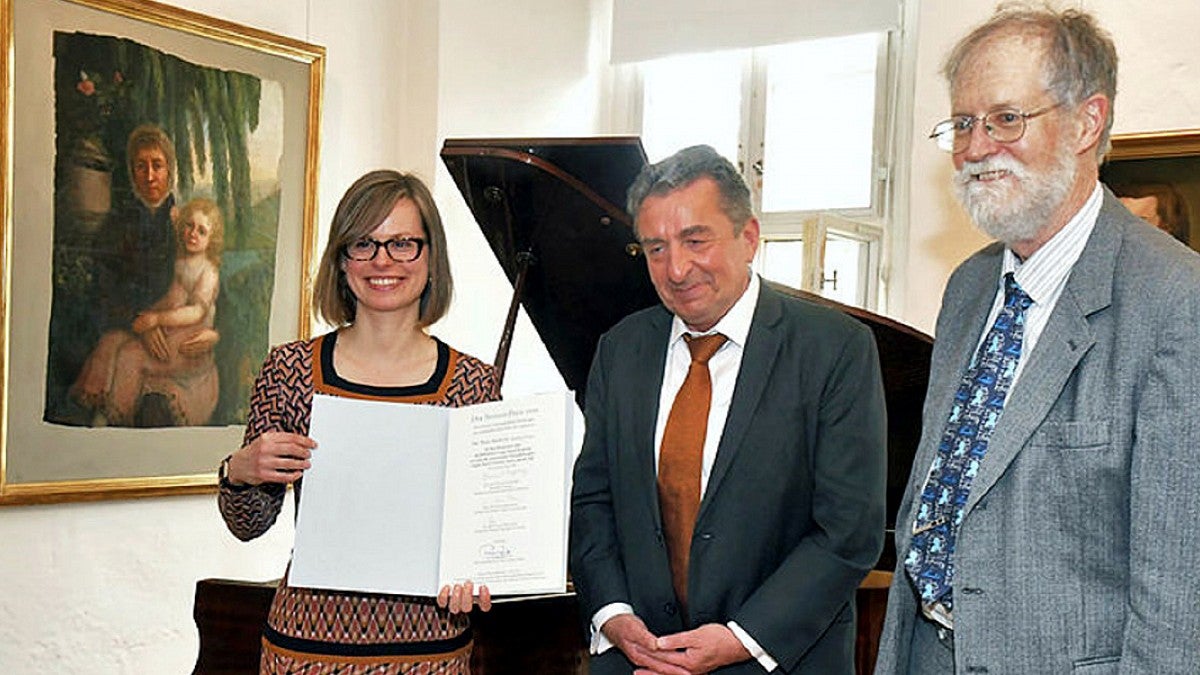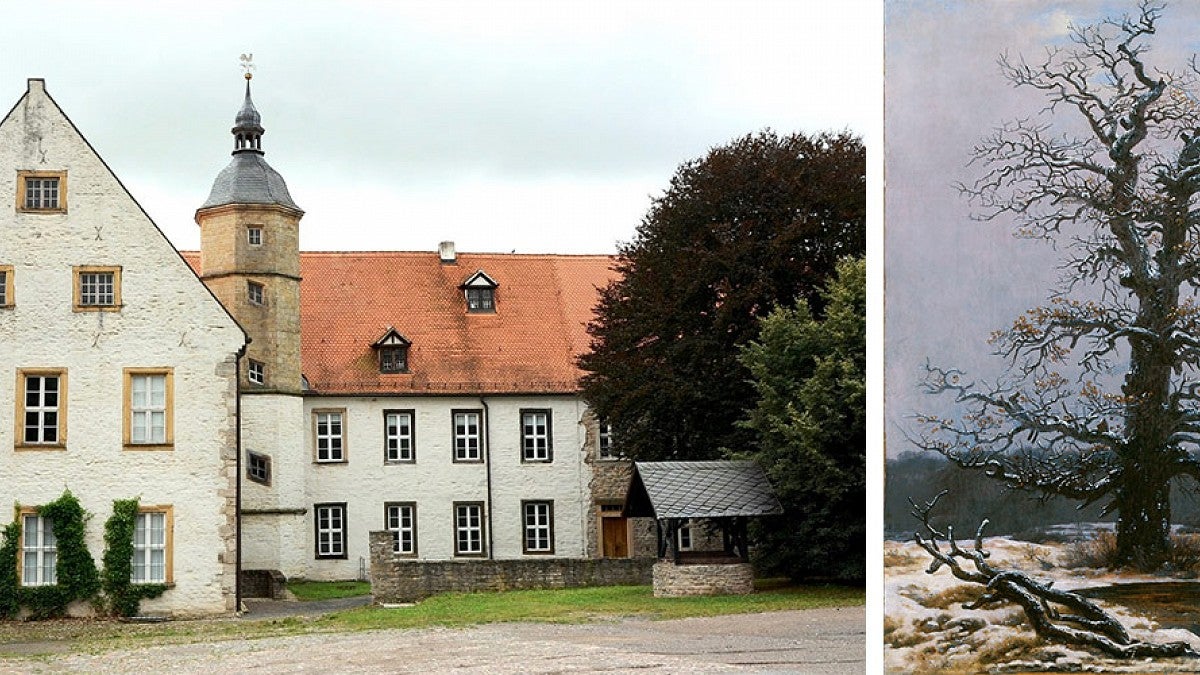
As a PhD student, Nina Amstutz began noticing anthropomorphic characteristics in the landscape paintings of Caspar David Friedrich, the 19th-century artist whose piece “Wanderer Above the Sea Fog” has become perhaps the most iconic visual symbol of German Romanticism.
Amstutz, an assistant professor in the Department of the History of Art and Architecture, discovered similarities between what life scientists were writing about at the time—comparative anatomy and morphology—and what was appearing in Friedrich’s imagery—such as an oak tree whose branches appear to spread like in diagrams of the nervous system (see “Oak Tree in the Snow” below).
“At the time naturalists were always interested in what studying nature can tell us about ourselves,” Amstutz explained. “When they wrote about minerals, plants, or whatever else, they were also writing about the human mind and body.”
“In a number of Friedrich’s works there are anthropomorphic details, things in the landscape that recall the human form,” she continued.
Discovering the parallels between the scholarship of naturalists and German Romantic landscape painting was the seed for Amstutz’s forthcoming book Caspar David Friedrich: Nature and the Self.
This Spring, the International Novalis Society in collaboration with the Friedrich Schiller University Jena, recognized Amstutz’s work with the biennial Novalis-Prize, a 2,500 Euro award for innovative scholarship in European Romanticism that enters new territory in the research covered. In May, Amstutz traveled to the German village of Wiederstedt, the birthplace of the Romantic poet Novalis, to accept the prize.

“It’s gratifying and validating to spend so much time on a project, a project that’s very meaningful to me, and to have scholars in my field appreciate that work,” Amstutz said.
Amstutz first encountered the work of Friedrich when she was in high school and went to see his “Abbey in the Oakwood” in Berlin. “Somehow the artist stuck with me over the years,” she said. Working on this book, Amstutz looked at the artist’s oeuvre, mostly post-1820, alongside primary sources from the life sciences, philosophy, and literature.
“I treat the representation of nature not as something that is either artistic or scientific,” Amstutz explained. “But rather, there are broader cultural forces at work in the way we look at and represent the world in any given historical moment, which cut across disciplines. It’s what historians call the ‘period eye’.”
Caspar David Friedrich: Nature and the Self will be available through Yale University Press in late 2019 or early 2020.
